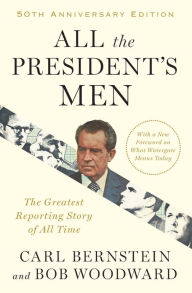Jane Leavy is an award-winning former sportswriter and feature writer for the Washington Post. She is the author of Sandy Koufax and the comic novel Squeeze Play, called “the best novel ever written about baseball” by Entertainment Weekly. She lives in Washington, D.C.
Sandy Koufax: A Lefty's Legacy
by Jane Leavy
Paperback
- ISBN-13: 9780061779008
- Publisher: HarperCollins Publishers
- Publication date: 03/16/2010
- Series: P.S. Series
- Pages: 288
- Sales rank: 26,353
- Product dimensions: 5.30(w) x 7.90(h) x 0.90(d)
Choose Expedited Delivery at checkout for delivery by. Tuesday, December 3
No immortal in the history of baseball retired so young, so well, or so completely as Sandy Koufax. After compiling a remarkable record from 1962 to 1966 that saw him lead the National League in ERA all five years, win three Cy Young awards, and pitch four no-hitters including a perfect game, Koufax essentially disappeared. Save for his induction into the Hall of Fame and occasional appearances at the Dodgers training camp, Koufax has remained unavailable, unassailable, and unsullied, in the process becoming much more than just the best pitcher of his generation. He is the Jewish boy from Brooklyn, who refused to pitch the opening game of the 1965 World Series on Yom Kippur, defining himself as a man who placed faith over fame. This act made him the standard to which Jewish parents still hold their children. Except for his autobiography (published in 1966), Koufax has resolutely avoided talking about himself. But through sheer doggedness that even Koufax came to marvel at, Jane Leavy was able to gain his trust to the point where they talked regularly over the three years Leavy reported her book. With Koufax′s blessing, Leavy interviewed nearly every one of his former teammates, opponents, and friends, and emerged with a portrait of the artist that is as thorough and stylish as was his command on the pitching mound.
Customers Who Bought This Item Also Bought
-
- Stan Musial: An American Life
- by George Vecsey
-
- Juiced: Wild Times, Rampant…
- by Jose Canseco
-
- Watching Baseball Smarter: A…
- by Zack Hample
-
- Roger Maris: Baseball's…
- by Tom ClavinDanny Peary
-
- The Captain: The Journey of…
- by Ian O'Connor
-
- Through My Eyes
- by Tim TebowNathan Whitaker
-
- King of the World: Muhammad…
- by David Remnick
-
- Among the Thugs
- by Bill Buford
-
- Go For the Goal: A…
- by Mia HammAaron Heifetz
-
- October 1964
- by David Halberstam
-
- Moneyball: The Art of Winning…
- by Michael Lewis
-
- General Patton: A…
- by Stanley Hirshson
-
- The Moral Animal: Why We Are…
- by Robert WrightLuann WaltherLuann Walther
-
- All the President's Men
- by Carl BernsteinBob Woodward
-
- The White Lioness (Kurt…
- by Henning MankellLaurie Thompson
-
- The Reagan Diaries
- by Ronald ReaganDouglas Brinkley
-
- Not Without Hope
- by Nick SchuylerJere Longman
Recently Viewed
— Bradley Honigford



















